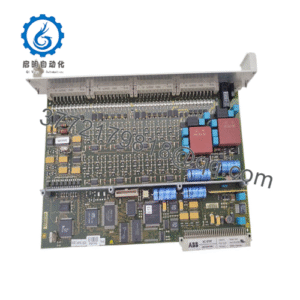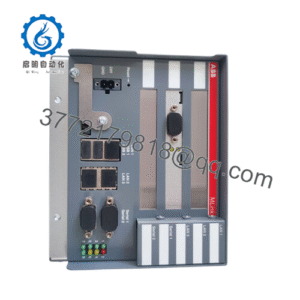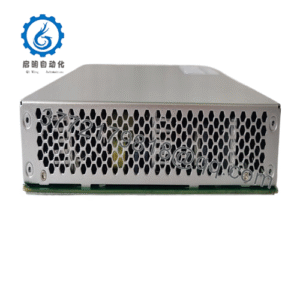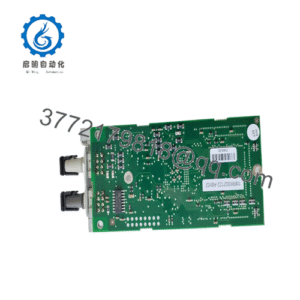Description
Product Model: DKC01.3-040-7-FW
Product Brand: Bosch Rexroth (formerly Indramat)
Product Series: ECODRIVE03 / DKC series
Product Features:
- 40 A rated current with 700 V DC bus support
- Multiple interfaces (RS-232/485, analog, optional parallel/stepper card)
- Compact, modular design for single- or multi-axis systems
- Legacy support via factory repair/reman due to discontinued new production
- DKC01.3-040-7-FW
Technical Features & Benefits
With DKC01.3-040-7-FW, you’re getting a drive controller engineered for robust motion control. The unit supports a 700 V DC bus and a continuous 40 A current capacity, giving it ample headroom for typical servo loads. Although newer models may push higher currents, this amplifier still fits many mid-power axes in packaging, CNC, or printing machines.
One particularly advantageous feature is the flexible interface portfolio: the drive comes standard with RS-232/485 and analog signals, while an optional DKC01.3-LK-EAK02 card adds parallel and stepper interfaces. That makes it easier to retrofit or integrate with older control systems or mixed architectures.
Thermally and mechanically, the module uses a compact, efficient design. Though precise internal cooling details depend on firmware version, in practice many field users report stable operation in ambient conditions up to +45 °C. The modular build also simplifies servicing and swap-outs (important since new production is discontinued, as discussed later).
From a benefits perspective, you gain these advantages:
- Adaptable control topology: Whether you’re running incremental or absolute encoders, stepper motors, or analog velocity loops, the DKC01.3-040-7-FW can handle mixed setups.
- Legacy support: You can keep aging but productive automation lines alive by leveraging repair/reman rather than rip-and-replace.
- Compact footprint: The module’s size is manageable in control cabinets, freeing rack space for other system components.
- Proven reliability: As a unit from the ECODRIVE03 lineage, it shares tested components and field-proven architecture across many installed systems.
Because this is not a “plug-and-forget” product, you’ll want to select firmware, properly parameterize it, and monitor thermal and environment conditions. That segue leads well into the next section on system role and fit.
Product Role & System Fit
In typical automation architectures, DKC01.3-040-7-FW acts as a servo amplifier / drive module. It translates control-level commands (velocity, position, torque requests) into high-power pulse drive signals that energize a servo motor. In effect, it bridges the gap between your PLC or motion controller and the motor itself.
What sets the DKC01.3-040-7-FW apart is its positioning in the ECODRIVE03 ecosystem. This module is intended for compact, flexible, and economical setups: think mid-tier axes, packaging machines, servo presses, pick & place, and general automation tasks where ultra-high power isn’t required but precision and flexibility are. It slots in well alongside MKD servo motors (the matching motor family in many Rexroth systems), and is often paired with multi-axis bus controllers or proprietary motion controllers.
Compatibility is broad: you can integrate DKC01.3-040-7-FW via analog command loops, RS-232/485 for parameterization or monitoring, or via optional cards for parallel or stepper control in hybrid systems. The unit is robustly designed to be a drop-in amplifier in automation lines, even if the system design evolves later.
However, note a few caveats. Since new production has ceased, the route to maintain or expand usage is via factory repair or remanufacturing rather than sourcing fresh units. You’ll want to plan for backups or spares early on. Also, check that your feedback devices (encoders, resolvers) remain compatible and that cable lengths, shielding, and connector wiring follow Rexroth’s guidelines (as detailed in the ECODRIVE03 manuals).
When properly integrated, the DKC01.3-040-7-FW module is robust and versatile, forming the backbone of servo-driven systems in factories and retrofits alike.
Installation & Maintenance Insights
Putting a DKC01.3-040-7-FW into service takes attention to practical details. Below are key considerations drawn from real-world experience and the ECODRIVE03 documentation.
Start by mounting the drive in a ventilated cabinet, allowing clearance (top and bottom) per Rexroth’s guidelines (often ~50 mm or more) to ensure airflow and heat dissipation. Use appropriate panel filters or fans if ambient conditions are warm or dusty.
Mounting orientation matters: avoid tilting or mounting the module in unusual angles that disrupt internal cooling paths. Ground the chassis well, and route high-power conductors separately from signal/control wiring to minimize interference.
Before energizing, pre-check wiring: verify correct three-phase input (380–480 VAC, 50/60 Hz) connections, DC bus linkages, and verify the control voltage supply (often 24 VAC or DC per variant). Also check the parameter FW version or firmware version to ensure matched versions across axes if in coordinated motion.
During first commissioning, run the drive at low speed and low torque to confirm motor feedback wiring, tuning loops, and feedback scaling. Monitor temperature rise, bus voltage behavior (especially under regenerative loads), and fault logs. Be particularly alert to over-temperature or over-current warnings during transient tests.
In maintenance mode, periodically inspect connections, clean cabinet dust, ensure proper ventilation, and monitor thermal performance. Because newer units are not available, planning for scheduled preventive swaps (or having a factory-repaired spare on standby) is wise.
If a DKC01.3-040-7-FW fails, you can pull it and swap with a remanufactured unit. The modular nature of the design simplifies field replacement. As you swap, back up parameters and FW versions so that commissioning time is minimal.
Because DKC01.3-040-7-FW is part of a legacy but still well-supported line, leveraging repair lanes (factory reman) is essential. Keep serial numbers, warranty records, and historical fault logs properly archived for repair vendors.
Applications & Industry Context
You’ll often find DKC01.3-040-7-FW driving axes in mid-power environments where cost, flexibility, and performance all matter. Consider these examples:
- In packaging machinery, servo axes for conveyors, labeling heads, and pick-and-place gantries can be controlled by DKC01.3-040-7-FW. The compact form factor and support for analog commands or stepper fallback make it ideal for retrofits or hybrid packaging lines.
- On printing machines, precise motion is critical. The module can coordinate tension control, web handling, and registration axes, even in multi-axis systems where synchronization is necessary.
- In assembly lines and robotics, small Cartesian robots, feeders, or positioning tables fall within its performance envelope. The ability to support different feedback types (incremental, absolute) helps when mixing new and legacy units.
- CNC or turret machines in light machining or metalworking setups can use DKC01.3-040-7-FW for tool changer axes, or non-primary axes like coolant headers, spindles for small parts, or automation add-ons.
- In lab automation or test rigs, where space is tight and thermal loads moderate, this module’s compactness and legacy support can make it a smart choice.
Because new production is discontinued, many users adopt DKC01.3-040-7-FW in retrofit contexts—when replacing older drives but retaining motors, encoders, and cable routes. In such settings, the module’s similarity to other DKC drives (shared parameter sets, firmware families) eases integration.
In harsher industrial settings (dusty, corrosive, temperature extremes), the IP20 rating means you’ll want enclosures or protective barriers to shield the drive. But in clean indoor environments—assembly halls, labs, packaging zones—it works well when ventilation and wiring standards are met.
In field experience, many plants have kept these drives running 10+ years via repair cycles, especially when budgets limit full modernization. The DKC01.3-040-7-FW plays a bridging role—keeping machine uptime high until full system upgrades become feasible.
Related Models
Here are a few related units in the DKC / ECODRIVE family, along with their distinguishing features:
- DKC01.3-100-7-FW – same series, but rated for 100 A current (for heavier loads)
- DKC02.3-040-7-FW – uses a lower-voltage input (200–230 V) variant while maintaining 40 A rating
- DKC11.3-040-7-FW – includes additional bus interface options (e.g. fieldbus, SERCOS)
- DKC01.3-200-7-FW – higher current variant in the same chassis style
- DKC03.3-100-7-FW – supports higher power and advanced variants (for more demanding axes)
- DKC11.3-100-7-FW – a marriage of interface flexibility and higher current rating
- DKC22.3-040-7-FW – newer generation with enhanced diagnostics and digital bus support
Each of these modules shares many architectural traits with DKC01.3-040-7-FW (parameter sets, firmware logic, mounting style), making cross-repair or replacement planning more straightforward in multi-unit systems.
Technical Specifications Table
| Parameter | Value / Range | Notes / Comments |
|---|---|---|
| Model | DKC01.3-040-7-FW | — |
| Current rating (continuous) | 40 A | Standard for this module class |
| DC bus nominal voltage | 700 V | Core bus link, shared with ECODRIVE family |
| Input voltage | 380–480 VAC, 3-phase | Standard supply for industrial environments |
| Input frequency | 50 / 60 Hz | Common global compatibility |
| Protection rating | IP20 | Dust-limited, not waterproof |
| Operating ambient temp | 0 to +45 °C (nominal) | Typical spec, though some may run higher with derating |
| Cooling / thermal design | Internal (via chassis, heatsinks) | Ensure airflow, ventilation clearances |
| Interfaces (standard) | RS-232 / 485, analog | Parameter, control, command paths |
| Optional interface cards | Parallel, Stepper (via EAK02 card) | Enables mixed control modes |
| Weight | ~5.1 kg | Field-reported figure in listings |
| Firmware versions | FWA-ECODR3-SGP/SMT etc. | Firmware must be selected and can differ across installations |
| Max installation altitude | ~1000 m | Above sea level derating may apply |
| DC bus capacitance | ~0.15 mF | Internal energy storage for smoothing regenerative flows |



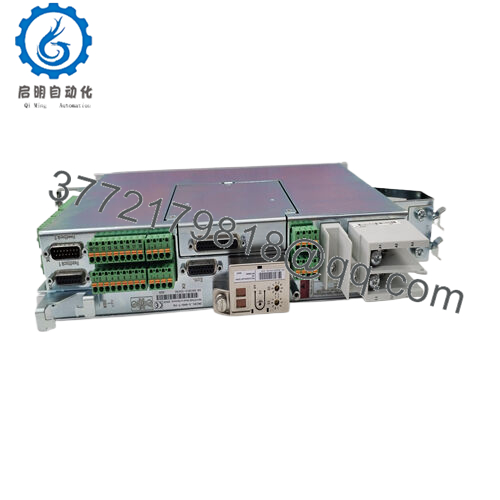
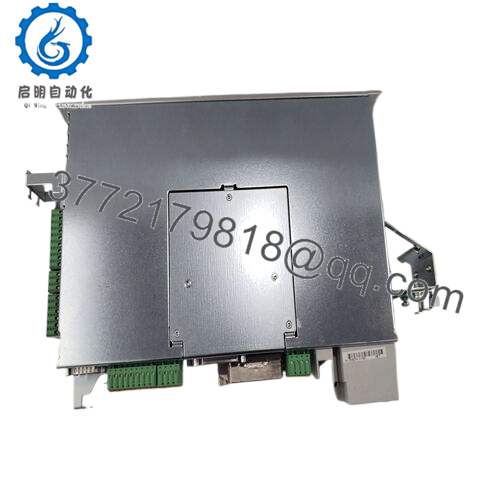
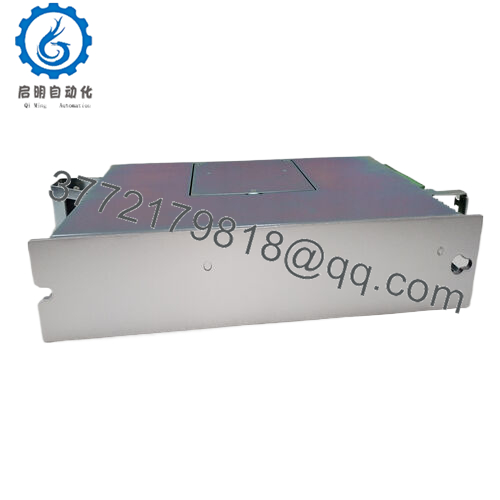
 WhatsApp: +86 16626708626
WhatsApp: +86 16626708626 Email:
Email:  Phone: +86 16626708626
Phone: +86 16626708626